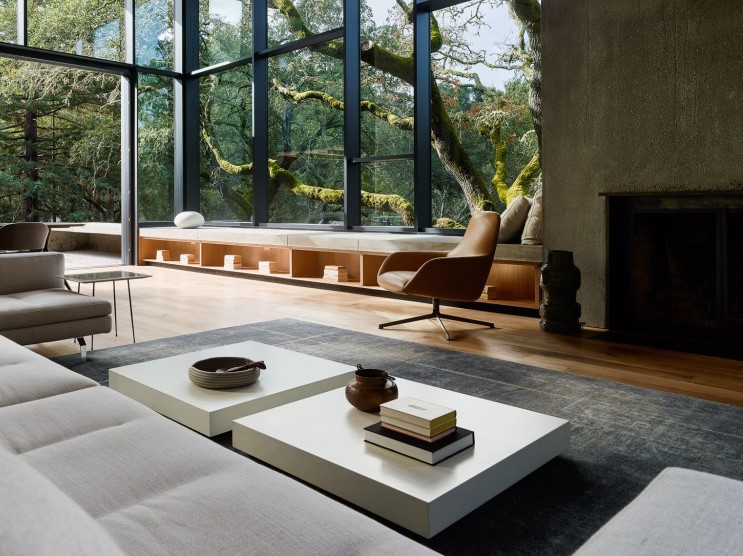Last week, Glenstone Museum announced plans to construct a building specially conceived to house a major sculpture by American artist Richard Serra, extending the museum’s outdoor program of art, architecture, and landscape along its Woodland Trail in Potomac, Md. Glenstone’s initial gallery was designed in 2006 by Charles Gwathmey. Its Pavilions, designed by Tom Phifer, opened in 2018. Phifer and Serra collaborated on the new building. A+A recently interviewed Emily Rales, director and co-founder of the museum about the expansion:
How did the collaboration between artist and architect work?
Richard Serra conceived the artwork. Tom Phifer of Thomas Phifer & Partners designed the model for the building. Then he and Richard Serra held conversations in which they worked out how the artwork and the building would relate to one another in scale, proportions, light, and materials. It was a fluid collaboration between the artist and the architect.
The collaboration with the landscape architect?
Adam Greenspan of PWP Landscape Architecture has extended the Woodland Trail design. Visitors will reach the new building by crossing a bridge over Greenbriar Stream, then going along a curving, beautifully planted path. Adam was also the landscape designer with PWP when Serra’s Contour 290 was installed.
The overall design intent?
The goal is to create a building that is more than a container for the artwork. The building is integral to the experience of the work.
The design inspiration?
The building continues the design vocabulary of the Pavilions in its form, material, and integration into the landscape.
The material palette for the addition?
The principal material is concrete.
Its scale and proportion?
It’s a single-story building of 4,000 square feet.
Its context?
This is the first building for art that we’ve added since we opened the Pavilions in 2018—so it’s a significant expansion of the experience.
For more, go here.
[slideshow id=2345]



